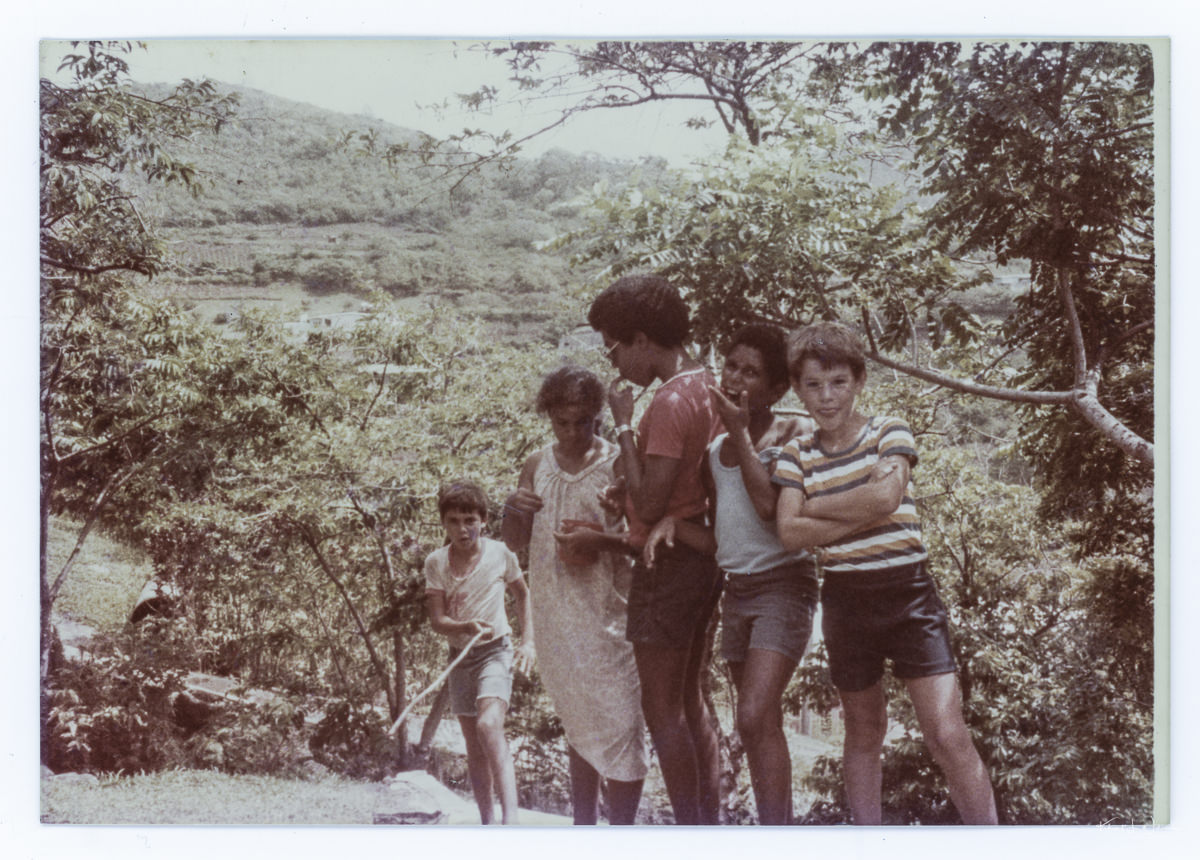Unlike the lush tropical forests fed by the mineral-rich volcanic soils of St. Vincent, Bequia’s ecology is more spartan. Bequia is mainly covered with smaller trees and shrubs and brush. However, many families cultivated tropical trees brought centuries ago from Indonesia, India, and other parts of South East Asia, as well as fruit plants native to the Americas such as cashew, almonds, sugar apple (cherimoya), and soursop.
One of my favourite native fruits is the Bequia plum. Mom’s younger sister, Mary, had a lot of plum trees in her steeply sloped front yard. Whenever we visited my grandmother in Bequia, we would walk over to see my cousins. Part of the excitement of the trip was picking plums and filling our little bellies.
The thin edible skin of the plum has a waxy appearance, and the pulp is yellow when ripe and sweet. In the centre of the fruit is a large pit, or stone, which is inedible. Peeling the plums is time-consuming. I usually popped the whole fruit into my mouth and transferred it from cheek to cheek, nibbling my way around the plum and then sucking on the seed until the flesh was gone and only the pit was left.
Bequia people love their plums! I never saw plims rotting on the ground because they are picked before they can fall from the trees. As children, we watched the red fruit ripen, sometimes impatiently eating the partially ripe fruit. We often got bellyaches from eating them too soon. My aunt had a lot of plum trees, and when she had a bounty of fruit, she often made stewed plums with cashew fruit. It’s super sweet and sticky.
So what are Bequia plums? I did my best Google-Fu and found the following on Wikipedia. Bequia plums are Spondias purpurea.
Spondias purpura is a species of flowering plant in the cashew family, Anacardiaceae, that is native to tropical regions of the Americas, from Mexico to Brazil. It is also very common in most of the Caribbean islands. It is commonly known as jocote, which derives from the Nahuatl word xocotl, meaning any kind of sour or acidic fruit. Other common names include red mombin, plum, purple mombin, hog plum, ciriguela, ceriguela, seriguela, siriguela (Brazil) cocota, ciruela huesito (Colombia), ciruela, ciruela traqueadora (Panama), ciriguela, cirigüela, cirguela, cirguelo (Ecuador), makapruim (ABC_islands_(Leeward_Antilles)), and siniguelas (Philippines). It is a popular fruit throughout Central America, particularly in El Salvador, Nicaragua, Honduras and in Costa Rica.
The plums come in two colours, red and yellow. The fleshy red ones are the only ones that grow on Bequia, but the yellow ones can be found all over St. Vincent. Bequia plums do not grow well on the mainland. They require dryer weather, and the more arid ecology of Bequia is ideal for growing them. It’s for this reason the red ones are called Bequia plums.
Mom doesn’t remember when or who took this photograph or what camera was used, or what film stock.

